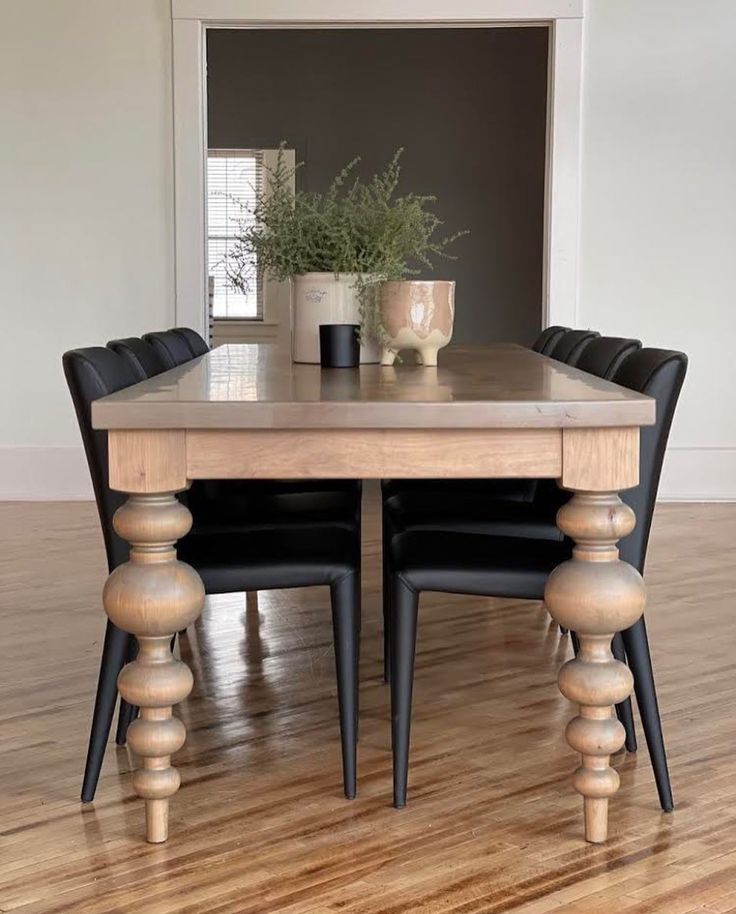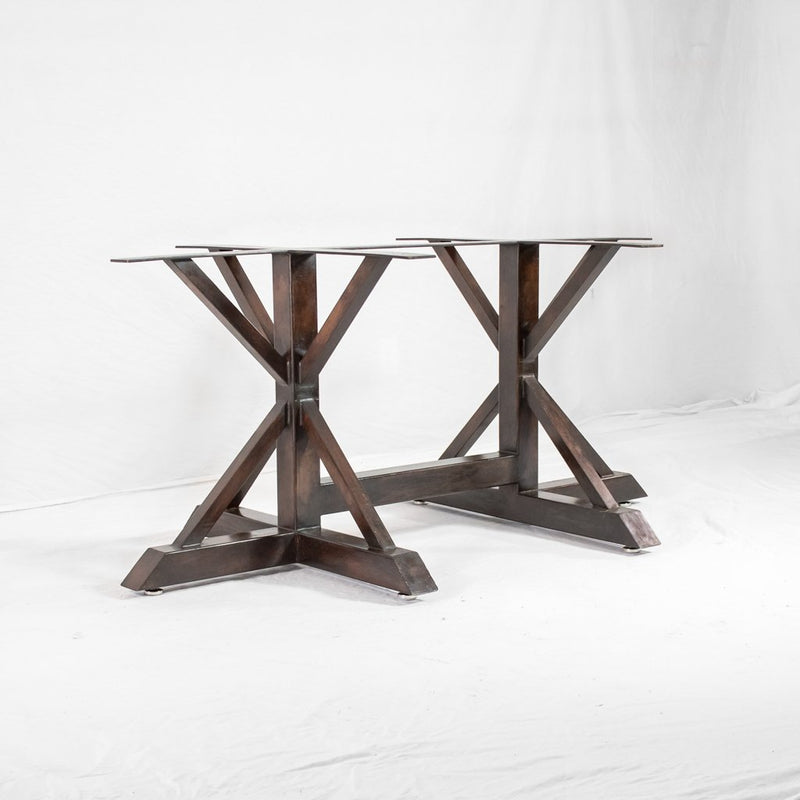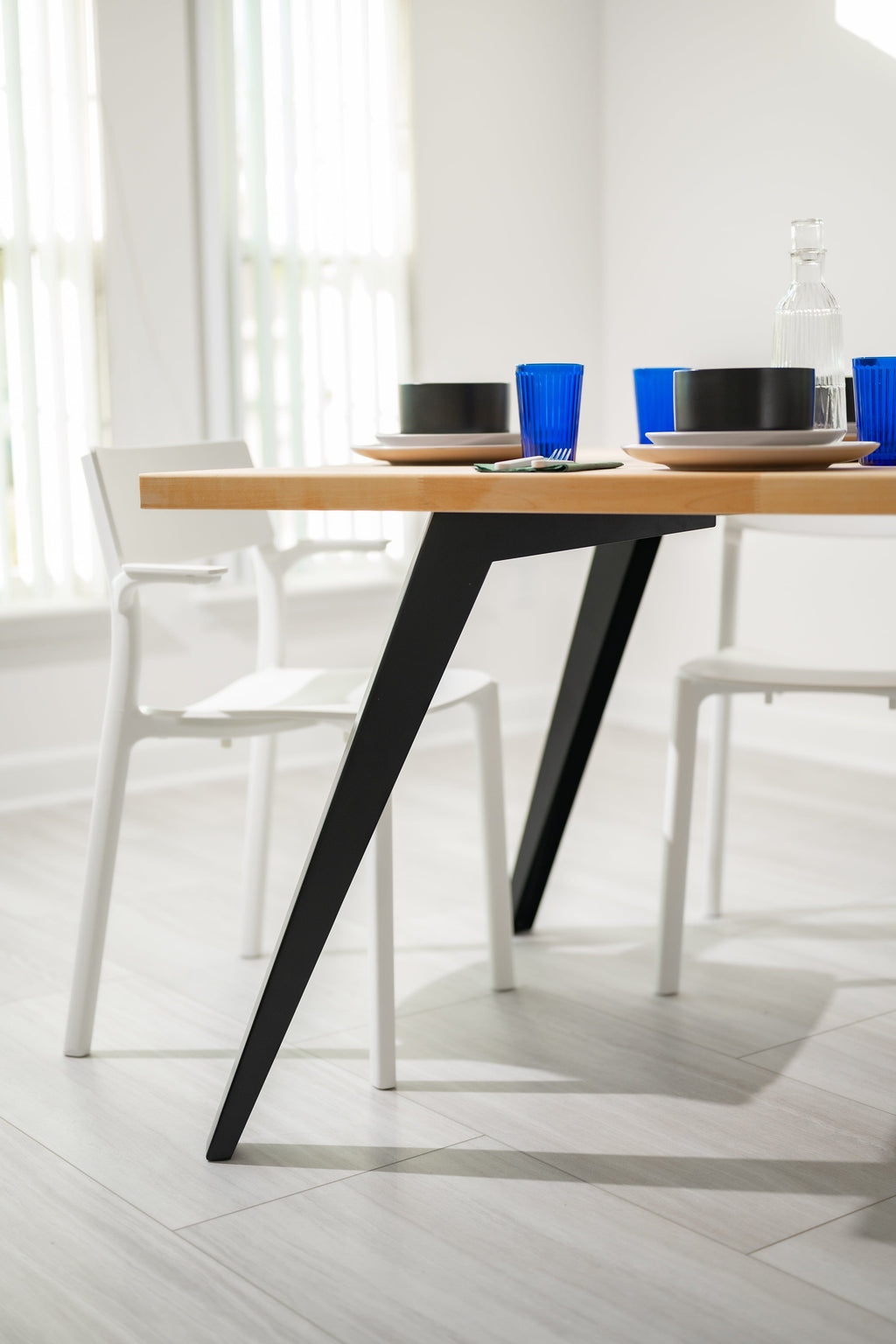Why Custom Dining Room Table Legs Are Worth the Investment
Why Custom Dining Room Table Legs Are Worth the Investment
Blog Article
Specialist Tips for Setting Up Eating Space Table Legs for Maximum Stability
When it comes to mounting dining-room table legs, attaining optimum stability is paramount for both functionality and aesthetic appeals. The process starts with choosing the right products and hardware, adhered to by careful positioning and consideration of weight circulation. Each step plays a critical duty in guaranteeing that the finished item withstands day-to-day use without endangering security or design honesty. Understanding the nuances of these components can substantially affect the general end result. What particular strategies can enhance stability also further?
Choose the Right Legs
When picking the appropriate legs for your dining-room table, it is necessary to take into consideration both functionality and looks. The legs you pick will considerably affect the total layout and stability of the table. Examine the table's planned usage; if you anticipate regular events, stronger legs, such as those made from solid timber or steel, may be extra ideal, as they supply boosted resilience and assistance.
Basic eating tables usually vary from 28 to 30 inches in elevation, so ensure the legs line up with this requirement for convenience. Tapered legs can add a contemporary touch, while transformed legs may share an extra traditional visual.

Select Appropriate Hardware
Exactly how can the ideal equipment boost the stability and longevity of your dining-room table? The option of appropriate hardware is essential to guaranteeing that the legs of your table are securely connected and able to hold up against regular use. Top quality screws, bolts, and brackets give the essential strength to support the weight of the table, along with any kind of extra lots put upon it during celebrations or meals.
When picking screws, select those made from long lasting materials such as stainless steel or brass, which withstand deterioration and maintain honesty over time. The length of the screws is just as vital; they should permeate deeply into the table's structure without jeopardizing honesty. For bolted links, consider utilizing lock washers to stop loosening up because of vibration or activity.
Furthermore, utilizing edge brackets can add additional assistance, particularly for larger tables or those with larger tops. These braces disperse weight evenly and assist maintain the table's shape. Guaranteeing that the hardware you select is proper for the particular materials of your table will certainly further boost its total stability and durability, enabling you to enjoy your eating experience for many years to come.
Ensure Appropriate Positioning
Proper placement of dining-room table legs is important for both aesthetic charm and useful stability. Misaligned legs can bring about an uneven tabletop, which might from this source not just be visually unappealing yet also compromise the table's functionality. To achieve optimum alignment, start by measuring the range from the table's edges to the leg accessory factors. This makes certain that each leg is located equidistant from the sides, developing a balanced appearance.
Make use of a level throughout setup to confirm that each leg is vertical to the tabletop. This action is critical, as even small inconsistencies can intensify into significant stability problems with time. It is suggested to note the wanted leg positions on the underside of the table with a pencil or covering up tape prior to protecting them. This method functions as a visual guide, enabling modifications as needed.
Furthermore, verify the placement after the preliminary screws are tightened, as adjustments may be necessary before completely safeguarding the hardware. By prioritizing appropriate placement, you not just improve the table's total style but additionally make certain that it continues to be secure and functional for years to find.

Take Into Consideration Weight Distribution
After guaranteeing proper positioning of the dining-room table legs, it is very important to take into consideration weight circulation to enhance security and capability. dining room table legs. Appropriate weight distribution is critical in protecting against tottering and making sure that the table can support its intended lots without danger of tipping or falling down
When positioning the legs, guarantee they are put at equal ranges from the visit the site facility of the table to equally disperse the weight throughout the framework. Take into consideration the weight of the tabletop and any type of items that will regularly relax on it, such as ornamental items or tabletop appliances. Tables with larger surfaces ought to ideally have legs positioned closer to the edges, as this makes the most of the base of assistance and lessens the risk of instability.
Additionally, if the table is planned for usage in a high-traffic area, think about using much heavier materials for the legs or including stabilizing aspects, such as cross-bracing or a lower rack - dining room table legs. These changes can aid maintain equilibrium and stop shifting during use. Ultimately, a well-considered weight circulation technique will significantly enhance the table's general performance, ensuring it stays a functional and attractive centerpiece for your dining room
Examination Stability Prior To Usage
Examining the stability of the eating room table prior to usage is a vital step that should not be neglected. If the table reveals instability, identify the legs or joints that may require change.
Next, inspect that all screws and fasteners are tightened properly. Loosened connections can lead to instability and potential damage in time. If required, use timber glue on joints to boost security, making certain to enable sufficient drying time.

Final Thought
Finally, the installment of dining space table legs calls for careful consideration of products, weight, hardware, and alignment circulation to accomplish optimum stability. By selecting sturdy legs and high-grade fasteners, making certain precise positioning, and distributing weight equally, the architectural stability of the table can be dramatically enhanced. Performing a stability test prior to normal usage better guarantees that the table will certainly stand up to day-to-day pressures, thereby supplying a secure and trustworthy eating experience.
When it have a peek at this site comes to setting up dining area table legs, achieving maximum stability is vital for both functionality and aesthetics. The legs you choose will significantly affect the general design and stability of the table (dining room table legs). Conventional dining tables typically vary from 28 to 30 inches in height, so make certain the legs straighten with this requirement for comfort.Appropriate placement of dining room table legs is necessary for both visual charm and functional stability.In final thought, the setup of eating room table legs calls for cautious factor to consider of materials, hardware, weight, and alignment distribution to attain optimum stability
Report this page